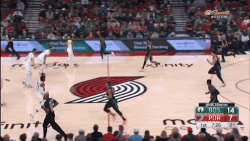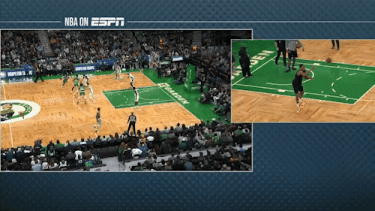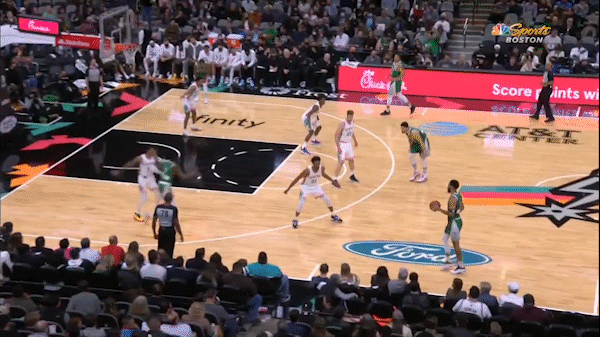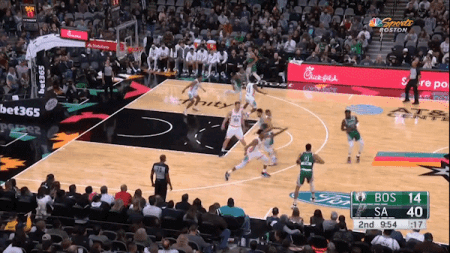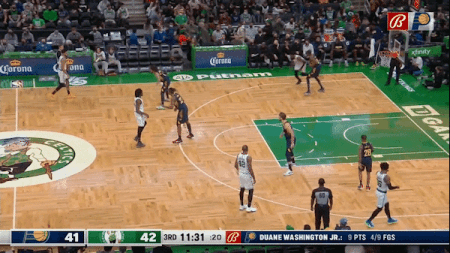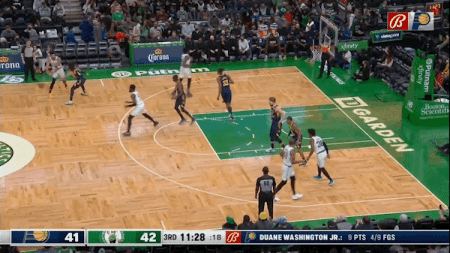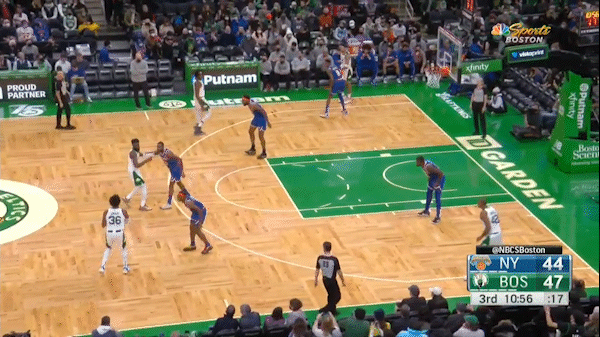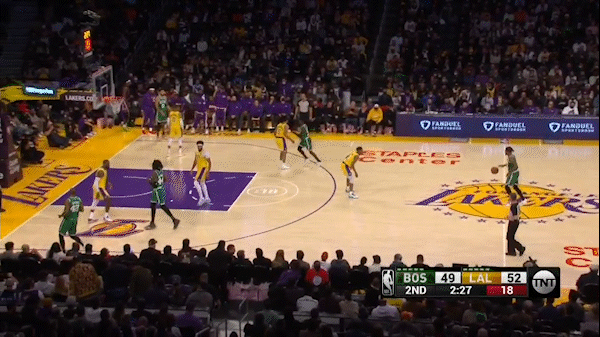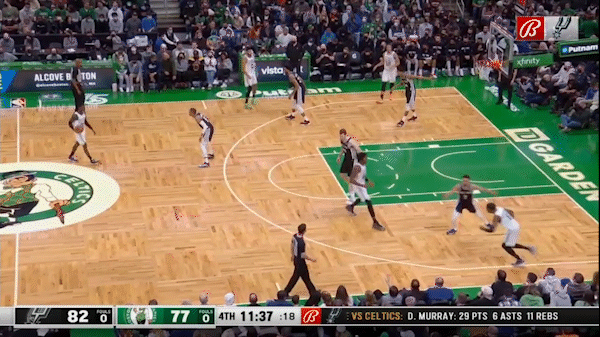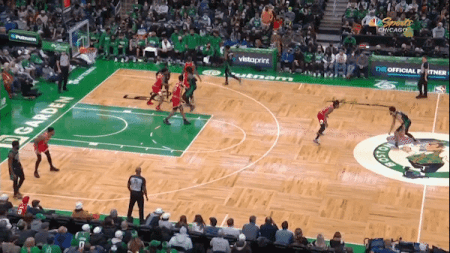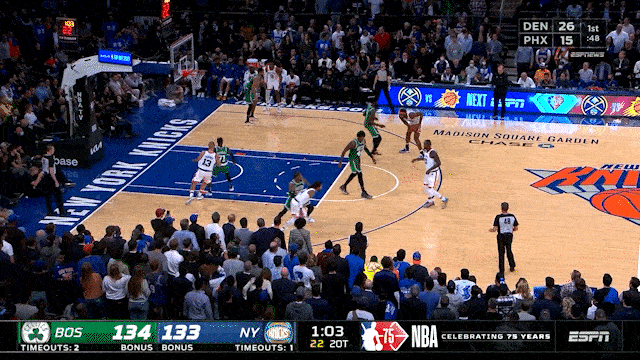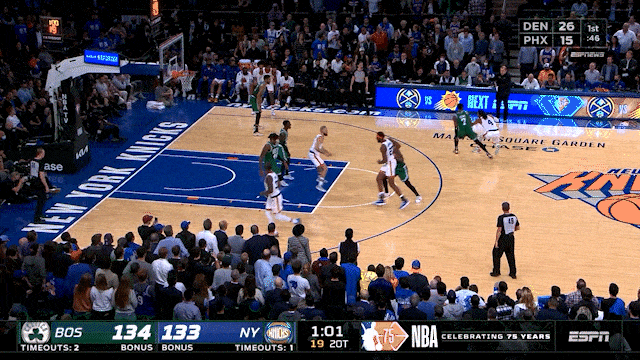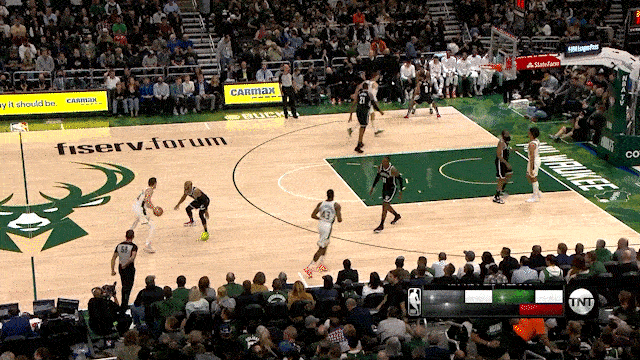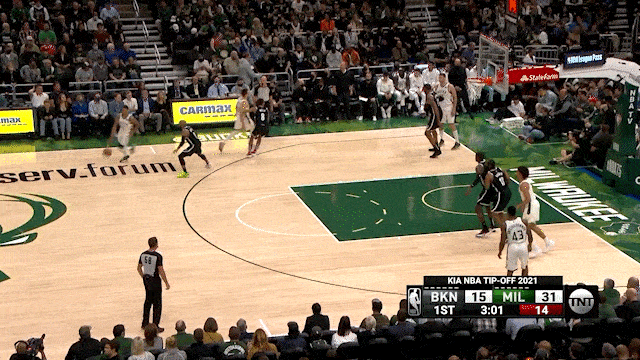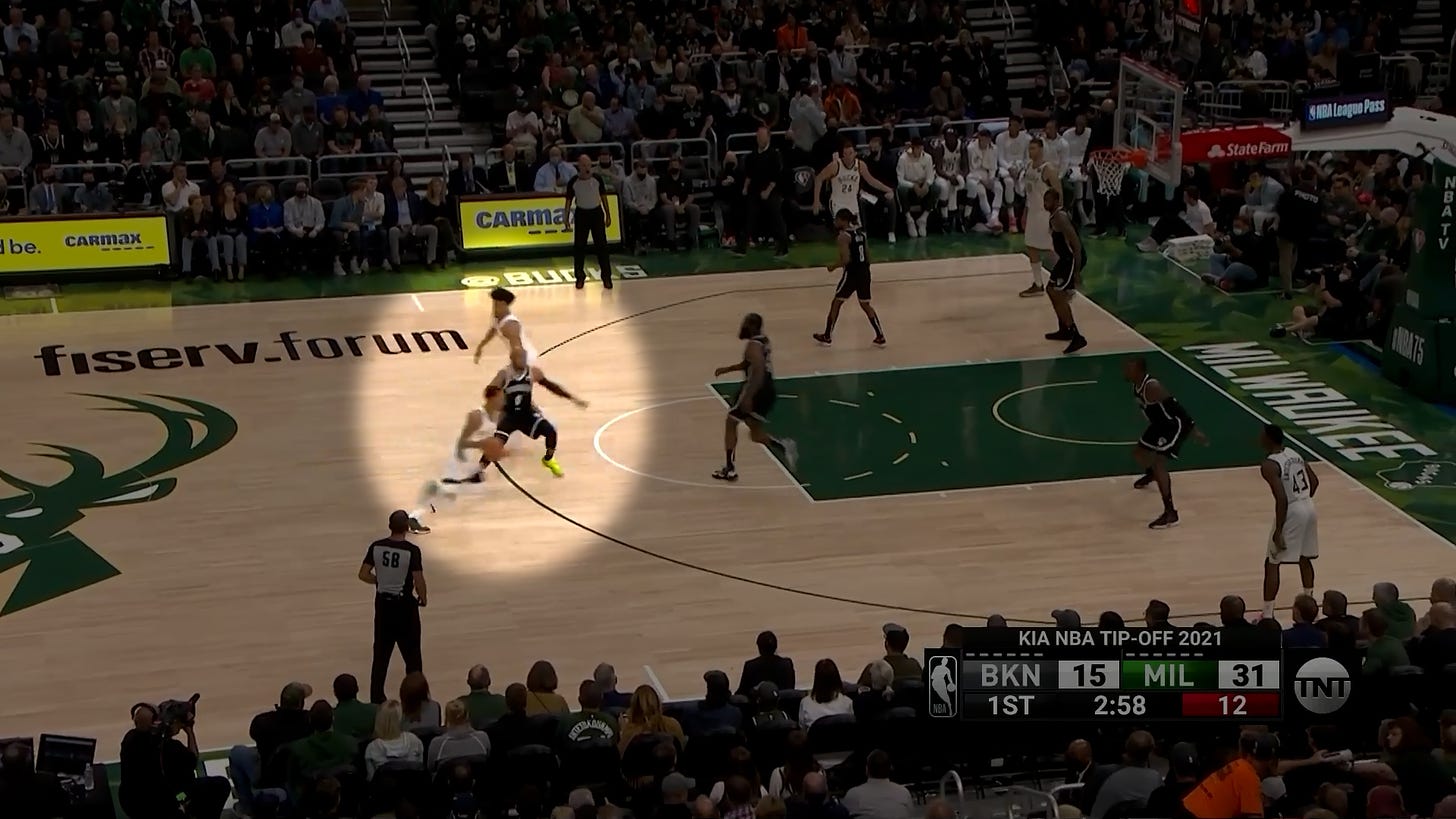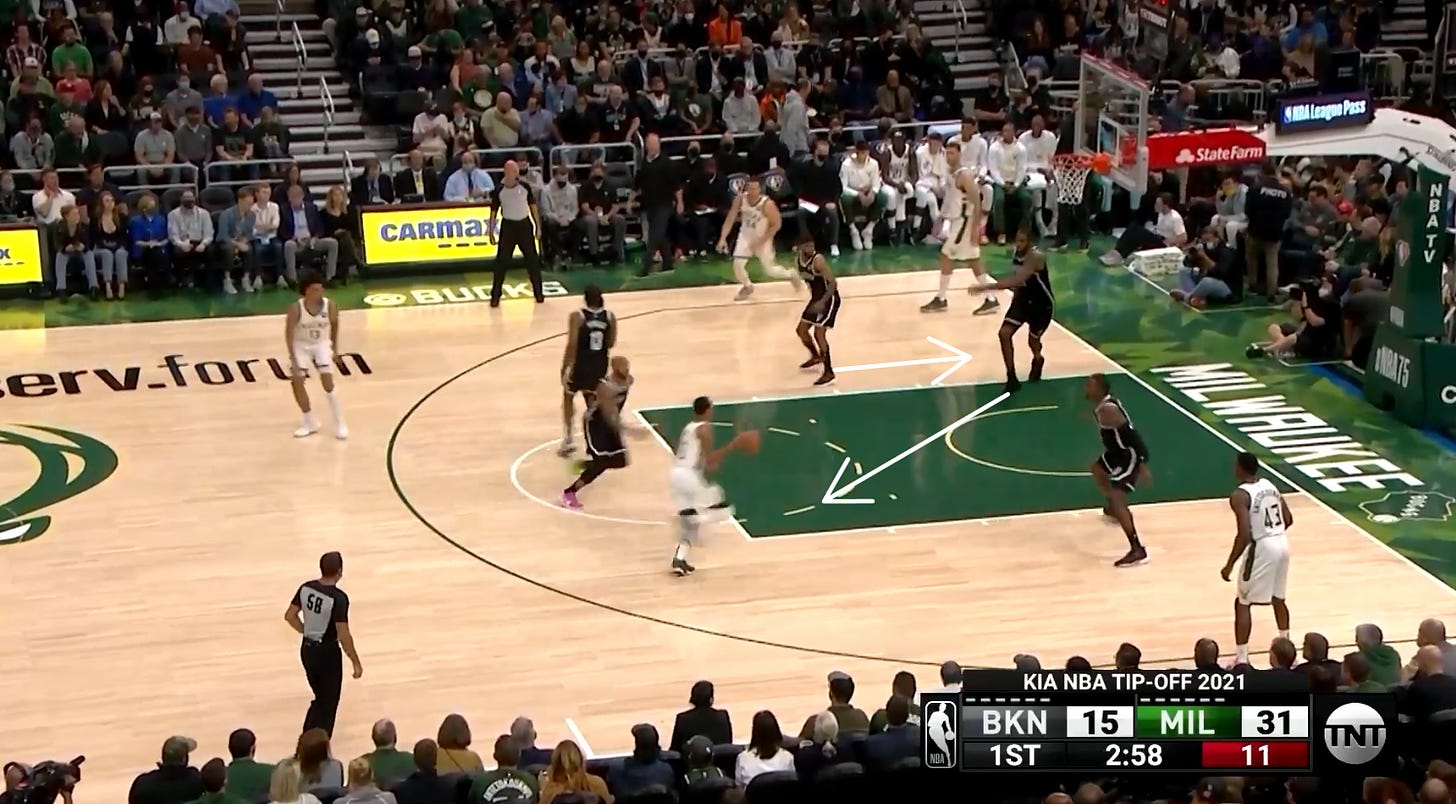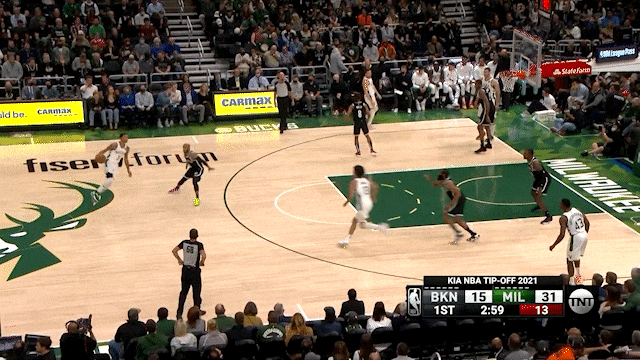Boston Celtics ATOs: Creative Guard Design
The Boston Celtics are currently the #1 team in the NBA in After Time Out scenarios scoring 1.01 PPP currently. After Time Out data is wildly inconsistent without hand-tracking but I always love the insight on what teams are the best in these situations even with the data just from Synergy’s tracking.
A prime example of this is that 58 of the 259 After Time Out possessions that ended with the Celtics scoring that I watched were not an After Time Out play. Some of these can be in the flow of the offense that results in just a basic ballscreen or isolation.
More examples of the play not resulting in what I would consider an ATO special could be from a team going zone, the Celtics getting a steal, or a scramble situation.
All things considered, I am impressed overall with the sets and specials that Ime Udoka and his staff have come up with in these situations – especially with the way they use guards in different screening actions. When guards are in involved in ballscreen action and setting it I am terming it “Rockets” in the play names since the Rockets ran this action all the time with Harden.
21 Ghost – Rockets
The Celtics have been running this counter out of the 21/Pistol series where the initial screener for the ball fakes the ballscreen and then ghosts to the middle of the floor.
As he receives the pass a guard opposite sprints up and sets a ballscreen for him – typically with a weaker defender to force a switch, a hedge or a miscommunication.
The Celtics have preferred to run this for Jaylen Brown After Time Outs, but also in half-court situations as well so it likely started as an ATO then morphed into a good set.
Wedge Lift Ghost
A similar set as the previous one, the initial action here starts off with a “Wedge” screen like the common ballscreen set and then a lift to the middle of the floor.
Flowing into ghost action with Smart/Brown attacking the Pacers defense.
Delay Under Ghost
We will come back to this set and action since it is one of my favorites out of the Delay or 5-Out action, they will hit either Jaylen or Tatum in the middle of the floor and then Ghost or ballscreen for them.
Elbow Pin Tatum
Some of the Celtics struggles can be attributed to stagnant play and isolation basketball so getting Tatum involved without him handling initially is a good way to get him the ball. In this play the ball is entered to the elbow and then opposite Schroder sets a pindown for Tatum in the corner so the defense is forced to either switch into a mismatch or Tatum can catch and shoot or attack easier.
Wide Pin Tatum
The same exact concept from the Elbow pin set is applied but without an elbow touch and just having Schroder set a quick pindown for him in the corner, with both plays resulting in easy looks for Tatum.
Wide Ram – Rockets
Combining the Rockets ballscreen or ghost actions with a wide pindown initially the Celtics get a player moving into a ballscreen (similar to what the Celtics ran for Ray Allen previously) and then picking and popping to the 3 point line with multiple options to attack out of.
Ram – Rockets
Almost the exact same play the Celtics use this Rockets action but with a screen down in the middle of the floor or what I call “Ram” action into a ghost screen.
This is part 1 of an 8 part series looking at all of the Celtics After Time Out plays in the series they run with them – if you want to support please subscribe and share with others!
Enjoy!
Coach Pyper
New York Knicks use Spain action to beat the Celtics
The New York Knicks beat the Boston Celtics in a grueling, awesome, double-overtime thriller in their season opener. Late in the game, after the Celtics went up by 1 the Knicks called a timeout and ran a sideline out-of-bounds special that put them ahead for good – followed up by another Spain set.
Spain action is not anything new, but even though it has been run for 5-6 years in the NBA (& 9-10 in Europe) it is still one of the hardest actions to guard. If you want an in-depth breakdown on Spain action, I did a big breakdown on the Phoenix Suns sets from last season.
New York Knicks STS Spain
For reference, this is not a brand new play – even for Thibs and the Knicks – they ran it in last year’s playoffs in after-time-out situations as well.
The play starts off like the most common Screen the Screener set that basically every team in the NBA runs with the ball reversed from elbow to elbow and the inbounder receives a backscreen.
What normally would occur next is a look for the player off the down screen to catch and shoot or attack, but this set flows right into a pass or in this scenario a dribble hand-off. I am not positive, but I am sure that the adjustment or tweak in this scenario is to go into a hand-off since it is a safer play than a pass which is what the original set uses.
Once the player coming off the down screen gets the ball, Robinson rolls to the rim, and Fournier the inbounder sets a backscreen on his man and pops to the 3 point line.
Check out how Schroder hesitates and is caught in the middle deciding if he should switch on the backscreen or stay and this allows Fournier to pop and attack a long closeout to get the open side dribble 3.
Now when we watch the full play again, you can understand why Fournier was open and why this play design is great from Thibs & the Knicks.
Toronto Raptors Original Set
The original play that this is taken from is a Nick Nurse & Sergio Scariolo special from 2019 to the present Toronto Raptors. I can’t say for sure, but I would bet a lot of money that this was a Scariolo special since I noticed his Spain National Teams running Spain action back in 2010-11 and this feels like a set he would have influence or install.
New York Knicks Spain Playcall
Once the Celtics did not score on the next possession, the Knicks came back down the court with no timeout and you can see here Thibs and then Fournier signaling “Stack” which is the most common way for NBA teams to call out “Spain” action.
This play was a jumbled mess and I think that almost helped make it work because normally with a Spain play a team would design it with their big Robinson setting the screen with the shooter Fournier setting it. Here Randle sets the ballscreen and Fournier sets the backscreen with Robinson in the dunker’s spot but it did not impact this play much at all.
In the below clip you can see the confusion it creates and forces Schroder to switch out onto Rose leaving the Celtics worse on-ball defender guarding him and Smart peeling off onto Fournier on the Pop.
I hope this sheds some light on why the Knicks’ last two plays worked and how Spain action is one of the toughest to guard. If you liked this breakdown feel free to share it & if you have any other scenarios, plays, or thoughts on any future breakdowns let me know in the comments below!
Coach Pyper
Milwaukee Bucks “Ghost” vs Switching
There are a couple of different philosophies when it comes to attacking switching defenses, and the primary way for NBA teams is to get the mismatch you want and then attack 1 on 1. Overall the 3 main ideas when it comes to facing switching defense are:
- Keep it moving – get the ball moving side to side and allow the defense to make a mistake.
- Pick your matchup – try and exploit the matchup you want, but rely on 1 on 1 play and focus on players to make plays.
- Designing plays – having plays in your playbook you can run against switching.
Mike Budenholzer has been one of my favorite after time out coaches to study, and he designed a great special during tonight’s game to take advantage of the Nets switch-everything defensive scheme.
Before we dive too deep into the play breakdown, let’s look at “Ghost” action and what it is designed to do.
Ghost Action
One of the hardest actions in basketball is the fake screen into a pick and pop – typically a guard to guard screen. I call this action “Ghost” because there is no screen even though it looks like a ballscreen is going to be set. Here are some examples of Steph Curry setting these Ghost screens and the problems it presents for the defense.
Even though I term this action as Ghost, the playcall when we run this with our high school team is completely different.
No Screen = No Switch
Defensively when teams switch on and off-ball screens the number one rule is no screen then no switch. When teams switch on defense they should “Touch, Talk & Take” to execute the switch. Since there is no screen then there is nothing to touch, there is nothing to switch. This was highlighted prominently when Anthony Davis beat the Nuggets with his game-winning 3 when Plumlee did not stay on him and assumed the switch with no screen.
Chicago Ghost Breakdown
Now that the context of why Ghost screens work for the offense and how defense adjusts to no screens, we can look at this special from the Bucks tonight. The play starts out with “Chicago” action or a pindown into a dribble hand-off on the wing.
Once the dribble handoff occurs, the player in the Dunker’s spot (Nwora) sprints up toward the player with the ball (Hill) and fakes a ballscreen and Ghosts to the slot.
This creates confusion with Carter because Harden correctly stays with Nwora, but Carter opens up and anticipates a switch out to the pop which opens up a lane for Hill to drive into.
Once Hill drives this forces help from the low man (Aldridge) and the help the helper (Mills), to react to the drive. When NBA teams help they usually open up their body to split the 2 players who are spotted up on the wing and the corner, but this situation is more unique because of what Brook Lopez does.
Lopez starts in the Dunker’s spot but then relocates to the corner as the drive occurs, leaving Mills anticipating to help low on the drop-off pass to Lopez.
When Lopez relocates to the corner, Mills takes a peek to see where he went and this is when Connaughton cuts right behind him into space for the dunk finish.
If you enjoyed this breakdown please feel free to share it with others!
Thanks,
Coach Pyper

